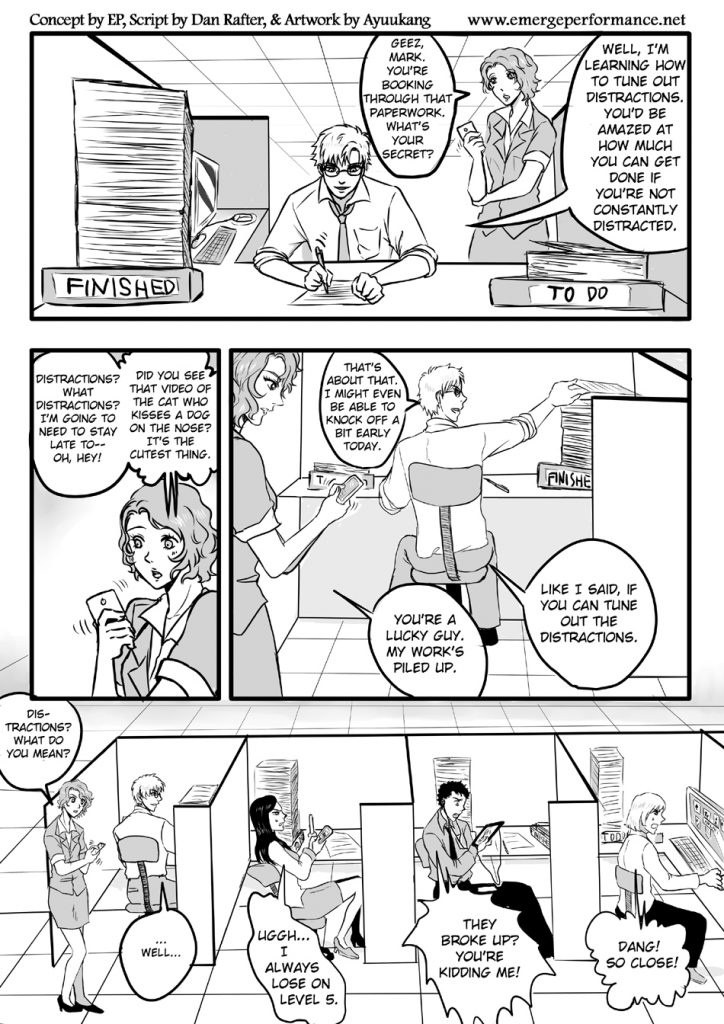
Information is power in this new age economy – especially the ability to make sense of data and decipher patterns, anomalies and trends across multi-dimensional domains. At the same time, we are all experiencing some degree of “information overload”. Our inbox is constantly beeping; our WhatsApp and WeChat threads frequently buzz with new but unnecessary messages; our mobile phones are constantly by our side, ensuring that we are contactable anywhere and anytime. With myriad distractions vying for our attention, it’s no surprise that our minds wander from the task at hand for nearly half of our waking hours each day according to research published in 2010 by two Harvard psychologists.
The Internet of Things (IOT) holds great promise for a better life, but with the relentless pace of progress, there are clearly pitfalls to watch out for.
Given the way our daily lives have evolved and the direction they appear to be headed thanks to technology, what are the skills a business leader needs to be equipped with in order to be future-ready?

There are IQ and EQ – long recognized as important requirements – but these days there is also a growing need for AQ, or attentional intelligence. This
refers to the ability to mind our attention in the most effective and efficient manner to meet the prevailing contextual needs. Simply put, AQ is about where we direct our energies. For a business leader, the consequences of channelling our energies into the wrong funnels can include confusion, disengagement,
frustration, conflict and a waste of everyone’s time. Hands up if you’ve been to an unproductive 4-hour meeting that should have been concluded within 15 minutes. Leaders fail, systems “hang” and organisations collapse as a result of corporate ADHD.
Studies show that the average employee spends 2.5-3.0 hours daily on digressions such as Facebook, phone calls, emails, chit-chat with colleagues and texting.
Imagine if you could put this time to productive use and get your to-do list completed by lunchtime. Is there really a need to stay so late in the
office? It all starts with where and what you are paying attention to. Charles Duhig calls this a keystone habit – a habit that will trigger a ripple effect of personal and professional transformation resulting in better work-life balance, staying composed under pressure, bouncing back from setbacks,
and achieving a deeper sense of personal and professional well-being.
There are 3 main constructs that form the basis of attentional intelligence.
Attentional agility – The ability to switch focus in a dynamic and volatile situation, shifting from broad to narrow or from internal
to external. For example, we can focus our attention on a specific data analysis assignment, but when it is time to go for a meeting, we are able to shift from one task to another without difficulty and maintain presence in the task at hand.
Attentional stamina – The ability to focus on the task at hand for longer periods of time. Paying attention is no easy feat – it takes
effort, energy and resources, both mental and physical. Fortunately, it is like a muscle that can be trained, allowing you to engage in high performance attention in short spurts and over longer periods of time. Attentional stamina is important because some assignments take more time than others and sometimes there are no shortcuts. Ever tried to fix a poorly written report?
Attentional stability – The ability to reduce the magnitude and volume of our wandering mind. With attentional stability, we wander less,
and when we wander, it is easier to recover and resume the task at hand.
Like all forms of intelligence – emotional, cognitive, academic or spiritual – even if you are born with it, you still have to develop and sharpen your attentional intelligence, just like any other muscle or skill. Use it or lose
it, as they say. This is where a mindfulness practice through proactive meditation comes in. The foundation of a mindfulness practice is attentional discipline.
Here’s how you can cultivate attentional intelligence at the workplace.
- Identify your stress triggers. Everyone has a stress threshold. When you cross your limits, your attention can seize up and then it’s
game over. The key is active management. Stress is a matter of perception. So own up to your perceptions and triggers with honest self-acknowledgement
and write them down somewhere. It doesn’t have to be public information, but you have to own up to it. In doing so, it will give you the space
to choose your actions and responses appropriately. For example, I had a client who would always tighten up whenever a colleague appeared to be walking towards him. It was a conditioned response from previous conflicting encounters and started to become an automatic response – in other words, no interactions were needed; mere proximity would trigger the reaction. When he realised this, everything changed because he asked himself
if there was really a need to tense up. Habits can be rewired. - Evaluate your environment. What sort of attentional resources does your working environment require – internal, external, broad, narrow?
What are the key distractions or minefields? What are the attentional reminders to help you reset? Armed with this information you can better prepare for a productive workday. Imagine you are a corporate athlete engaged in survival of the fittest in the urban jungle. With a game plan built upon well-considered preparation, you will be more likely to succeed. - Train your mind with attentional meditation. A simple practice is to attend to your breath. Observe your breath without changing or
manipulating it; instead, simply pay attention to the pace and stay with the inhalation and exhalation cycle as long as you can. If your mind wanders, recognise the drift and bring your attention back to your breath. Try this for 5 minutes a day, 5 days a week. I am sure you can afford 5 minutes a day, right? - Oh, and switch off all notifications on your handphone when you need to be in the zone. These days, we often find our attention drawn to our phones out of habit, not out of necessity. If it’s that urgent, let them call you and make that a form of communication practice at work.
Where we place our attention determines our perception, and our perception determines our attitude and altitude. Attentional intelligence offers a clear competitive advantage that is accessible to all, but you have to want it and you have to work at it. So why not start carving out your competitive advantage today!
Contact us at info@emergeperformance.net if you would like to find out more about our corporate training programs on attentional intelligence.